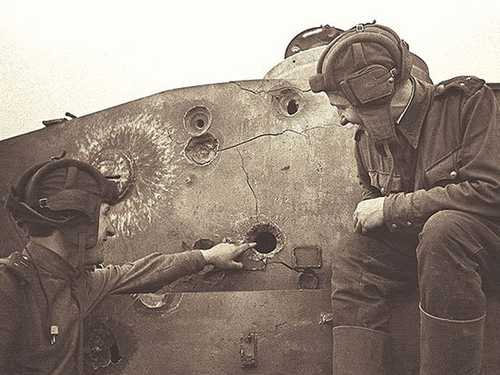
how many hits a "Tiger" could take
Tank commander, lieutenant Smelov, has put a "Tiger" out of action. He shows lieutenant Lihniakevich, who's destroyed two German tanks himself in the last battle, a hole from his shell in the "Tiger"'s turret. The shell was an average 76-mm armor-piercer. The "Tiger"'s turret has cracks from several direct hits by Russian shells. (maladetts)
This is a companion discussion topic for the original entry at https://www.ww2incolor.com/gallery/soviet-forces/18738/how-many-hits-a-andquottigerandquot-could-take
